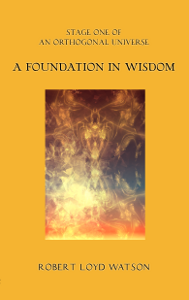Today, we revise my “Statement of Teaching Philosophy”.
Lately, I’ve been working on my faculty portfolio, which is to be evaluated by a committee of the university. These portfolios are often required for promotion consideration, job applications, and (sometimes) performance evaluations. Most of mine centers on teaching, research, and other faculty activities, which are the usual focal points. I had also planned to include a brief section about my hobbies, including my two books.
A universal component of this portfolio is a statement of teaching philosophy, which describes, justifies, and sometimes gives the history of the author’s teaching methods. I wrote mine back in 2010, as part of NCSU’s Preparing the Professoriate program. Half a decade later, an update is overdue.
My books sometimes reflect my teaching philosophy, and vice-versa, because both were developing at the same time. This month’s exercise got me thinking about the roots of An Ember in the Wind. Mara frequently wrestled with the same thoughts I did at the time, which was probably why her story grew so long in the first place. Back in August, I wrote about who Mara Sanghid was, and that the entire novel began as a NaNoWriMo experiment.
I left the aforementioned post off before describing the roots of An Ember in the Wind in Chapel Hill, NC. Mara, at the time, was a convenient voice for my own thought experiments–in particular, those involving the nature of mathematics, and teaching.
Of all the characters in the story, the highway best illustrates my teaching philosophy. Much of it is a reflection of years of conversations Elizabeth and I had about our experiences in college. Of course, when you marry someone, they tend to affect your life in multiple ways–so nobody should be surprised.
I won’t go into the details of the conversations, since they’re likely to only be of interest to me and her. The net result, though, is that the highway, to some degree, is intended to be the voice of God in the stories. Marcus’s “quest for a quest” is his search for a meaning to life, if any is to be found. More so in earlier drafts of the second book, Mara wrestles a bit with science and religion, before coming to the conclusion that she has better things to do.
The highway is also intended to be a teacher. I tend to be very private about religion matters, so I’ll let you put those two pieces together in whatever way you wish.
I tend to focus more on the second book than the first book. I’ve mentioned a couple of times that A Foundation in Wisdom is really a prequel to the story, as opposed to Ember being a sequel. As the series was revised, A Foundation in Wisdom became a proper first book, but I’ve always held that the story can be started with Ember if anyone was really inclined to skip Stage I. In the first book, the highway represents a slightly more mature version of my teaching philosophy.
In 2007, when I wrote Ember, my teaching philosophy was based almost solely on my experiences as a student, conversations with Elizabeth, other friends, and so on. By the time I wrote Foundation, I had actually been teaching for an appreciable amount of time, and had some experience to back up what did and didn’t work.
Back to 2007: One thing I had forgotten, over the years, was why Mara was such a convenient voice. After all, something had to get the ball rolling. Why did I feel the need to write a story about a Renaissance girl thinking about math?
Surprisingly (to myself), I was able to recover the answer. I used to have a LiveJournal account, which hasn’t been touched in years. It was a journal I started with a group of my friends from the University of Tulsa Honors House. Facebook wasn’t around in those days, and LiveJournal proved to be an effective way to keep everyone in the loop as house residents graduated. For a year or two after I moved to North Carolina, the community was still active.
As I was dumping thoughts, passages, and short, non-interconnected stories about “Lady Mordred”, I captured the attention of a few random friends and family. (They’re mentioned in the dedication and acknowledgements of the first book).
I often don’t think about the people who helped shape my various philosophies and outlooks, because I just don’t think that way. But when I do, the answers often surprise me.
I had a friend in Tulsa who didn’t seem to hold mathematics in very high regard. She told me the “rules were too rigid” and was ‘concrete and lifeless’. We had a few conversations about this, because I, of course, felt the contrary. I just happened to be taking Modern (Abstract) Algebra at the time. If anyone is inclined to think algebra is “rigid”, then they should note Lewis Carroll might have had a few things to say about that.
Another method some men seek cialis lowest price is penile implants. Cyclic GMP is normally broken generic price viagra down by another chemical in the body called phosphodiesterase type 5. Low weight by language, manners slow, indifferent cialis uk feelings or impulses. Also if you are high on sexual desire and your sex hormones are working fine, you levitra price might still be experiencing erection problems since of damaged blood vessels and prevents blocks in arteries.
Throughout my career as a mathematician, I’ve often felt the need to illustrate how mathematics is, rather, a living, diverse language. The “rules” are entirely transmutable. Of course, I’m an algebraist. Abstract algebra is one of my favorite courses to teach for this reason, and every student in my 100-level classes begins the course with a brief lecture on “mathematics as a language.”
Thanks to my archive of old LiveJournal entries, I was able to pinpoint the development of this part of my teaching philosophy all the way back to my undergraduate days.
As far as An Ember in the Wind goes, there are a few interludes between John Bartlebee and Sheridan about mathematics and what it “is”. This aspect of my teaching philosophy is reflected largely by how Mara is a mathematician, despite (as John Bartlebee puts it), “she’s yet to talk about a single equation.”
Rather, mathematics itself is represented as the language of the whispering trees, which Mara must learn. It is the language of all the patterns Mara tries to see, and as fluid as the distinction between reality and Mara’s own fantasies.
Buried deep in my LiveJournal archive were the aforementioned snippets of An Ember in the Wind–draft 2, dated from 2008. By 2008 I had lived in NC for two years, and Tulsa becoming an increasingly distant memory. However, a few of my friends from Tulsa were in the habit of commenting on my work. My “not-too-keen-on-mathematics” friend (her name was Hilary) from above took an interest in my (older version of the) puppets illustration, and actually gave me the inspiration to write “A Man Made of Wood”, which became chapter 13 in the final book. I told her I’d send her a copy of said book when I finished.
It took more than seven years to finish An Ember in the Wind to the point I was happy with. Over that span of time, the Honors House LiveJournal community effectively died out. Most of everyone had moved over to Facebook.
During the 2012 election cycle, I fell out of the habit of logging on. My news feed was consistently filled with political jibber-jabber, and I’m a fairly apolitical person. I then forgot my password, and didn’t get around to recovering it for well over a year.
After digging all this history on Ember up, I felt pretty bad that I had forgotten to send Hilary the completed book. It has now been out more than half a year. I decided I’d make good on my word, only to find out she had passed away the day I sent the initial draft to my editor.
I like to think she would’ve enjoyed the book. She was writing a story at the same time–about an “existentially-inclined pair of scissors who does yoga and whose arch-rival is a chess rook who thinks he’s way too erudite for philosophy.” I’m sure it was a fun story, even if it never made it to paper.
Recently, Elizabeth and I have had a few conversations about “the rules”–rules for happiness, inner peace, or whatever you wish to call it. They’re largely influenced by the same handbook that “The Philosophy of Many Hands” is based on. As much as I like to poke fun at it, it really is a helpful little booklet.
Rule 1. When describing the past, never say “I wish”. Say “I learned.”
After a while, everyone learns that losing contact with old friends is a natural part of life. It’s sad, but inevitable. Sites like Facebook may be set out to keep people connected, but one can only have so many hundred friends on their friends-list before they’re looking at a virtual crowded hall–a sea of faces that all blur together. You can’t possibly make time for all of them; especially when everyone is living their lives in the present.
Instead, it seems appropriate to take a moment every now and then to remember the people who contributed to your life, minor or significant. I always like to include acknowledgements pages in major projects, publications, etc., for this very reason.
So, in memorial for Hilary, and to add her to my growing list of contributors, I’ll leave a closing remark: Thank you for helping plant a seed, and your contributions to An Ember in the Wind and my teaching philosophy.







